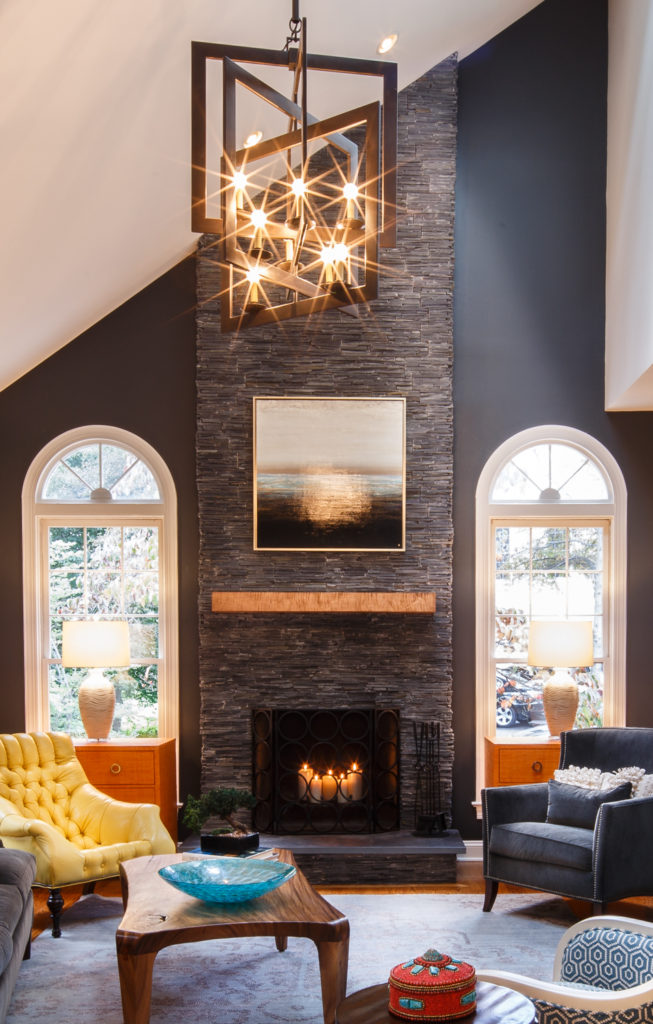
When I was a kid, my favorite board game wasn’t Monopoly or Clue. It was a less popular game called Masterpiece. If you don’t know, Masterpiece is a game about fine art; the players bid, acquire and sell paintings. The winner has the most valuable collection when all the art has been sold. Sounds exciting, doesn’t it? Well it was for me. I loved to study the paintings and memorize the artists. Later, I would look up the artists in our Worldbook Encyclopedia to learn more about them and their art. I suppose my path was being paved at an early age.
I am happy I spent time playing this game. It gave me an early appreciation for fine art, which has served me well in my profession. Of course, most of us do not have the means to acquire the world’s finest art, but that does not mean we cannot have art, that is fine, in our lives.
Selecting artwork for a project is one of the favorite parts of my job. I love helping clients choose pieces of art that not only complement the design, but also make them feel good. Over the years, I have learned a few things about the importance of art in the home.
Visual Artwork 101
The type of artwork for a home typically applies to visual art. What is visual art? “Visual art is a form of art that uses any medium to signify the artist’s idea, sentiment and imagination.” Forms of visual artwork include paintings, prints, drawings, sculpture, pottery, photography or textiles. I have successfully used all of these art forms in my design projects, but paintings and prints are the most common. I am often asked about the different categories of prints or paintings. Here is a simple explanation:
An original piece of art is a one of kind painting, photo or drawing. The artist creates only one piece and there are no copies. These pieces are unique and signed by the artist.
An original print is artwork printed by the artist, by hand. The print is created from a block or stencil the artist has also created by hand. Thus, each print is indeed an original, not a copy. Each print is slightly different and has subtle unique qualities. Original prints are signed by the artist.
A limited edition print, as the name implies, refers to a print an artist creates from his or her original art, but are limited in number. The artist decides how many prints will be available for sale. Once all the designated prints are sold, they are gone forever. The amount is limited and therefore more valuable. Limited edition prints are typically numbered and signed by the artist in pencil at the bottom of the paper or on the back. Also, many artists offer a certificate of authenticity with a limited print edition.
A print is any copy of an artist’s original creation. Thanks to digital processing, prints look very realistic and can be successfully transferred to many different types of materials. Most of our commercial art lines now offer excellent quality prints on canvas with brush strokes added for texture and realism. Printing techniques are so advanced that gorgeous art is now available on plexiglas and metal.
Now for the big question that always comes up…
What is a Giclee print? First, let’s tackle the pronunciation. Giclee is pronounced “gee-clay”. The term giclee comes from the French word gicler which means “to spray or squirt”. Giclee prints are created by using a high end inkjet printer to recreate or print an image. If processed properly and on high quality paper, giclees can be very valuable and last a long time. Giclees are often hand-embellished by a real artist to add texture and give an “original art” feel to them.
Begin or end with the art
Just like a fabulous rug, a piece of artwork can be the inspiration for a design project. However, it can also act as the final exclamation point to the statement you are making.
Often a beloved piece of art or photography will direct the color scheme or “feel” for a project. The design schematics are built around the piece by choosing the proper layout for display, plus furnishings, paint colors and fabrics that play well with the art. This process, in itself, is an art and requires a delicate hand. The goal is to complement, not copy.
The same holds true if the artwork is selected towards the end of the design cycle. It should complement the overall palette and sense of the space.
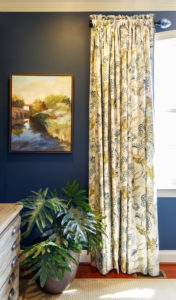
SCL Design Project — Artwork was inspiration for project design
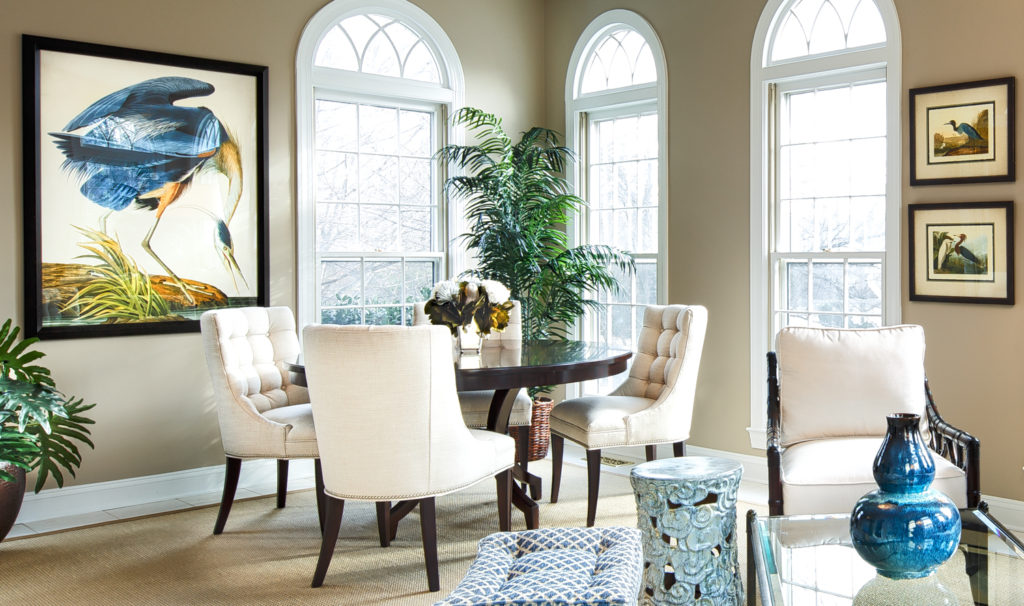
SCL Design Project — the artwork was selected towards the end of the design cycle
Focal point of a room…or not
Not all artwork has to be the Diva in a room. Keep in mind that you need pieces to balance the main event. Consider using smaller pieces that are hidden jewels and speak to the subtext of the design story. This is true for paintings, photographs, textiles or 3-dimensional pieces.
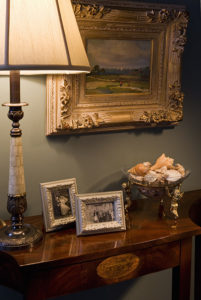
SCL Design Project — A hidden Gem
Buy what you like
Art is personal, so buy what you like. A piece of art should “speak” to you and evoke an emotion. Once again, do not worry about perfectly matching your decor. It is art! It is suppose to draw attention, enhance a space and give you pleasure.
All said, art helps set the stage and is impactful. If your room is soft and serene, avoid pieces that are loud or jarring. Save that statement for another space.
Also, don’t forget to dig out those family heirloom pieces. I often find that my clients have their best treasures hidden away in the basement or attic. Pull them out, dust them off and use them!
These pieces are almost always interesting and they honor your heritage. They tell your story and invite conversation.
A wall dedicated to displaying family photographs is a great way to showcase your family tree. A long hallway or staircase is the perfect spot for this application.
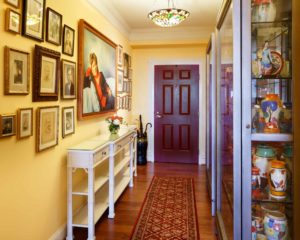
SCL Design Project
Commissioning a piece of original art
It is frustrating to finally find that “must have” piece of original art only to discover it is too big to go over your sideboard. Or, you love an artist’s work, but the color in the painting is just not right for your bedroom. Or, you find the most absolute perfect sculpture for your entry, but is too short. Do not fret…you can have it your way.
Speak to the artist about creating a piece on commission. Most artists will work with you to produce a new piece, based on one you have already seen, that suits your exact requirements. This is not unusual and does not mean a drastic price increase; however, a deposit is typically required to begin the work. It is important to give the artist clear specifications for size and color. It is also helpful to share photos of your room or, better yet, have the artist make a house call. Obviously, there is some lead time but it is worth the wait to get precisely what you want.
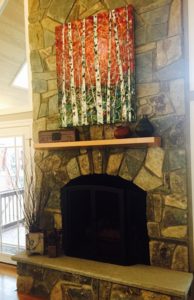
SCL Design Project –Commissioned Artwork
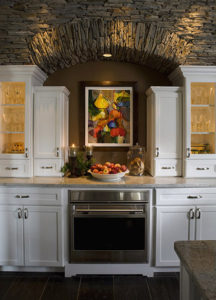
SCL Design Project — Commissioned Artwork
DIY (Do It Yourself)
Good news folks, the art industry has embraced the DIY movement!
Once again, thanks to advancements in digital processing, custom art is no longer just for the rich and famous. In fact, you can create your own masterpiece from photographs you take with your camera or phone. Many online companies can turn your favorite photo into a fabulous piece of art by transferring it onto canvas or paper. These pieces are high quality and come in a variety of frame options, but best of all, they are your personal creation!
In addition, most of our art vendors allow us to custom size and even color many pieces in their lines. With abstract artwork, we can also specify the orientation (vertical or horizontal) and the artist’s name will appear in the bottom right corner as expected.
All of our vendors allow us to select the frame. Or we can opt to simply print on canvas or float the artwork under glass. This DIY approach allows us to offer a customized piece of art to our clients and I love that. Speaking of framing…
If you plan to frame a piece of art on your own, do not skimp. Especially if the subject is an original or family heirloom. Use a professional framer who will help you select the proper mat and glass to insure the stability and longevity for your art.
Hanging art
Hanging artwork is a tricky business and has taken me years to get it right. Most people hang their art too high. After all, viewers should not have to stand on their tip toes to get a look at your Van Gogh! When hanging art on a wall, the center of the image should be around 57″ from the floor. This is the average measurement for eye level. it is also the measurement museums and galleries use to display art to the masses. Works for me…
If you are hanging art over furniture, again, resist the urge to hang it too high. The art should be weighed to the furniture, otherwise it looks like it is floating above the group. Think about the vignette, or grouping, of the furniture, art and accessories. It should provide a unified front. A safe guideline to follow is to hang art 7-10″ above the sofa, chest or sideboard.
When hanging a group or collection, I recommend laying it out on the floor first. This gives you a “template” to work from and helps minimize extra nail holes and touch ups. Also, invest in a laser, level and double sided tape. These tools have served me well and I keep them right next to the hammer and hooks. Hint–a small piece of double sided tape placed between the bottom of the frame and the wall keeps the artwork level if a door is slammed or the frame is dusted.
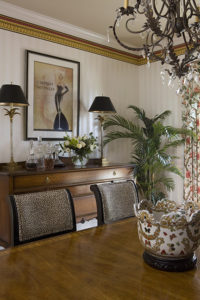
SCL Design Project
So keep in mind, dear reader, an artful home is achieved by buying what you love and displaying it with some care. This holds true whether you are investing in an original painting, a high quality giclee or a masterpiece your own budding artist created at school. Each piece can bring pleasure and harmony to your home.




